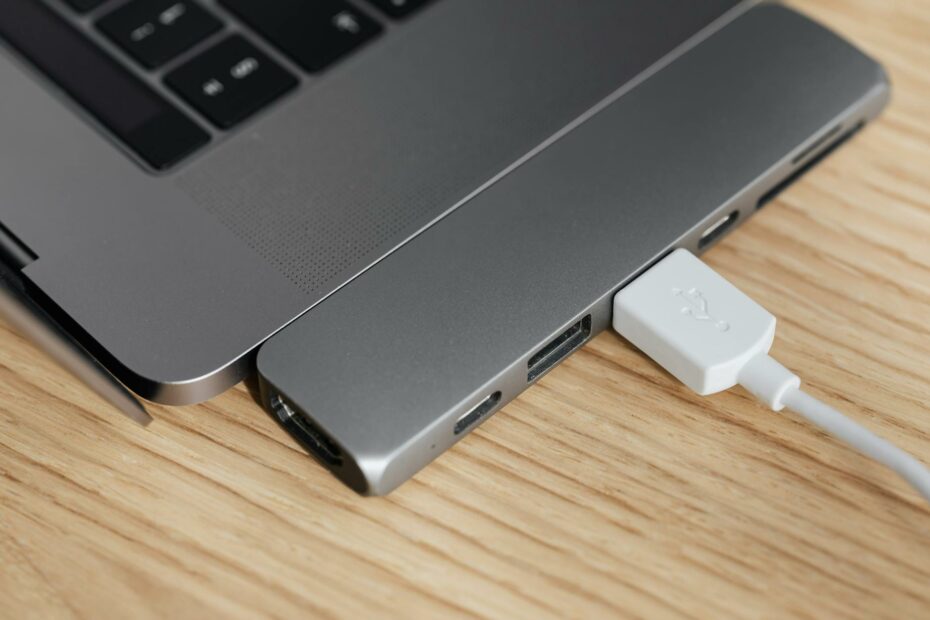In the realm of computer connectivity and data transfer, two terms frequently surface: USB and Thunderbolt. While they may appear similar, especially with the advent of USB-C and Thunderbolt 3 and 4 using the same connector type, there are fundamental differences that set them apart.
USB, which stands for Universal Serial Bus, is an industry standard that defines the cables, connectors, and communications protocols used in a bus for connection, communication, and power supply between computers and electronic devices. Over the years, USB has evolved through various versions, with USB 1.0, 2.0, 3.0, and now USB4, each improving on data transfer rates and power delivery capabilities.
Thunderbolt, on the other hand, is a hardware interface developed by Intel in collaboration with Apple. It was initially introduced as ‘Light Peak’ and later rebranded to Thunderbolt. The first commercial product to feature Thunderbolt was the MacBook Pro in 2011. Thunderbolt combines PCI Express (PCIe) and DisplayPort (DP) into one serial signal alongside a DC connection for electric power, wrapped in a single cable. Over time, Thunderbolt has also seen several versions, with Thunderbolt 1, 2, 3, and the latest, Thunderbolt 4.
The key differences between USB (before USB4) and Thunderbolt can be summarized as follows:
- Data Transfer Speed: Thunderbolt generally provides higher data transfer speeds compared to USB. For instance, Thunderbolt 3 offers speeds up to 40 Gbps, which is double the maximum speed offered by USB 3.2 Gen 2×2 at 20 Gbps.
- Power Delivery: Thunderbolt also excels in power delivery, capable of providing up to 100 watts, which is sufficient to charge laptops and other high-power devices. USB power delivery varies with the version, but typically it ranges from 10 to 100 watts.
- Connectivity and Daisy-Chaining: Thunderbolt supports daisy-chaining of up to six devices through a single port, which is not possible with USB. This feature is particularly useful for setting up complex workstation configurations with multiple monitors and external storage devices.
- Video Output: Thunderbolt can handle the transmission of high-resolution video signals, making it ideal for connecting external displays. For example, Thunderbolt 4 can support dual 4K displays or a single 8K display.
- Compatibility: USB ports and cables are nearly ubiquitous and are used across a wide range of devices. Thunderbolt, while compatible with USB-C connectors, is not as widely adopted and is typically found on higher-end laptops and peripherals.
- Cable Length: Thunderbolt 4 can maintain its data transfer speed over 2 meters without degradation, whereas USB4 may experience reduced transfer rates over the same distance.
- Security: Thunderbolt 4 has improved security features, offering better protection against direct memory access (DMA) attacks compared to its predecessors and USB interfaces.
USB4
USB4 represents a significant advancement in the standardization of data transfer protocols, incorporating the robust capabilities of Thunderbolt technology. Originally developed by Intel and Apple, Thunderbolt set a new precedent for bandwidth and versatility, offering speeds up to 40Gbps. USB 4 has adopted this protocol, which is a testament to Thunderbolt’s efficiency and reliability. This integration means that devices with USB 4 can enjoy the same high-speed data transfers and versatility in connecting with various peripherals as those with Thunderbolt. Moreover, USB 4’s compatibility with Thunderbolt 3 devices ensures a seamless user experience and a broader range of device interoperability.
USB 4 includes backward compatibility with all previous versions of USB, which is a significant advantage for users who have a range of devices and peripherals. This backward compatibility extends to Thunderbolt 3 devices, ensuring a seamless integration of different technologies. Another exciting feature of USB 4 is its support for DisplayPort Alt Mode 2.0, which allows for the transmission of DisplayPort 2.0 signals over a USB 4 connection, further expanding its capabilities in terms of video transmission.
The power delivery aspect of USB 4 is also noteworthy, with the standard supporting up to 100W of power delivery, making it possible to charge devices quickly and efficiently. This is particularly beneficial for users who need to charge laptops or other high-powered devices without the need for a separate power adapter. Additionally, the USB Promoter Group has announced that future versions of USB 4 will support even higher data transfer rates, potentially reaching up to 80 Gbps with certified cables, which hints at an even more promising future for this technology.
The convergence of these two technologies marks a milestone in the universal cable connectivity landscape, promising faster and more flexible connections for users around the world.

Gladstone is a tech virtuoso, boasting a dynamic 25-year journey through the digital landscape. A maestro of code, he has engineered cutting-edge software, orchestrated high-performing teams, and masterminded robust system architectures. His experience covers large-scale systems, as well as the intricacies of embedded systems and microcontrollers. A proud alumnus of a prestigious British institution, he wields a computer-science-related honours degree.
